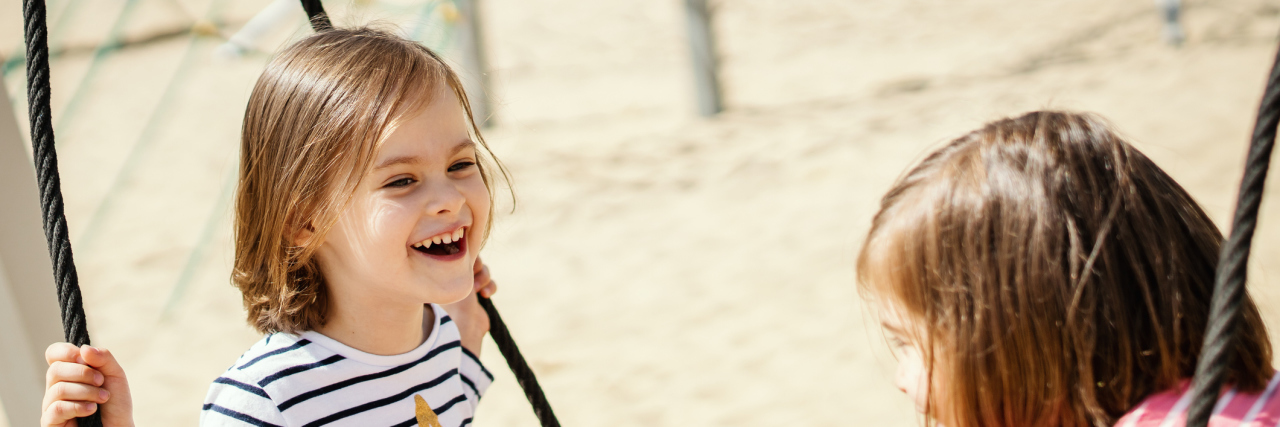Not too long ago at a playground, my daughter, Eva, gave me a mischievous smile as she approached a low, raised wall. Her friend, Teddy, also 3 years old, already was walking along the wall with his arms out to balance him.
I had discouraged Eva in the past from climbing on things like other children do. I told her to balance on a smaller raised area first and see how she did, but the bigger challenge still attracted her. She ran over to the area and looked back at me and laughed and then would go somewhere else for a few moments — only to turn around and run right back.
I am afraid. Her left arm is permanently paralyzed due to an injury she had while she was being delivered — a brachial plexus birth palsy. If she climbed on that wall and fell, what would happen if she got injured? What would happen if she broke her right arm, the one that has learned to do everything her left arm can’t?
This fear follows me every time we are at the playground, or when she runs in our backyard, or when she slides on her socks in our living room.
We tried a cast on her right, functioning arm once, to try to encourage her brain to learn to use Lefty however she could. Eva became a different child during those sessions understandably — her reaction had me in tears after only a few moments. It’s one thing to watch your child struggle with the daily setbacks of a disability, but I found it was a whole other ballgame for me to watch my usually cheerful and determined little girl crumble under the constraints of the cast.
Eva has been through two surgeries to repair the damage caused by her injury, and has been in occupational therapy since she was 6 weeks old. We do electric stimulation, stretches and aquatic therapy. We’ve consulted some of the leading surgeons in the world on her condition — which is rare because it is so severe, and her prognosis for recovery of function is uncertain.
One of the surgeons we spoke with told me not to be too overprotective at the park. “Don’t stop her from trying the monkey bars,” he said as Eva played with Mr. Potato Head and Lefty hung at her side.
At the time, I was furious with the doctor. Didn’t he understand the trauma we had all experienced with her injury? He didn’t know me. I wasn’t some helicopter parent; I was fighting for my little girl’s future!
As Eva grows up, her injured arm may experience disfigurement and chronic pain.
But, after a lot of counseling and a community of wonderful people supporting us, I have started to reframe how I look at Eva’s world. I have stopped mourning the things I think she can’t do, and started to ask myself and others, how she can adapt to a new activity or confront a new challenge.
She may not be able to bend her elbow, but she will learn to drive with adaptations. She may learn to put on jackets like actor Martin Sheen does, which isn’t a bad thing (he has the same kind of injury as Eva).
There are still plenty of frustrations for her — and feelings my husband and I wrestle with about what happened to her.
But that afternoon at the park, as I watched Eva balance on the small wall, I thought of that doctor and the advice I hadn’t wanted to take. I realized he might just have been right. I can’t organize her life around my own fears and my perception of her condition. She has to learn to tackle challenges and opportunities on her own. So, I made a decision.
I told her to try the bigger wall. Off she ran and up she climbed, and around she went — one arm out to balance her. And when she made it the whole way, she looked at me and smiled with such pride and happiness. I made a silent promise to her that afternoon.
I can’t always be there to catch her when she falls, and she will fall one day. But, perhaps, sooner than I would like, she will want to take on a new part of the playground. I hope to teach her how to do it safely, and then, I’ll let go and watch her rock those monkey bars.
Getty image by oska25

